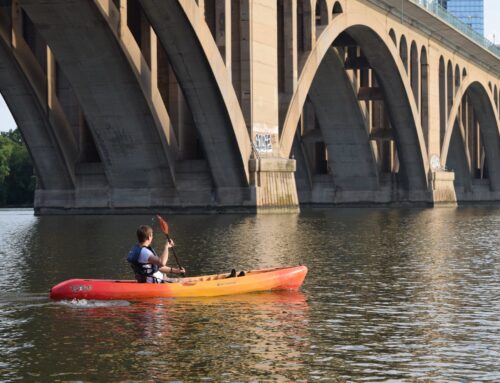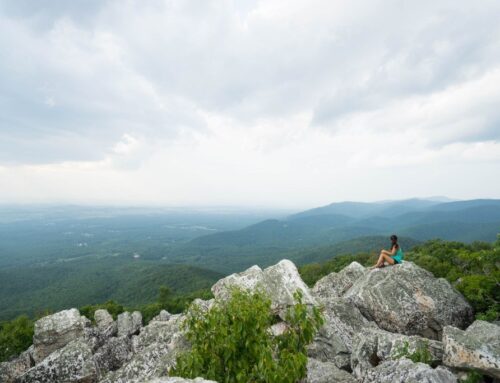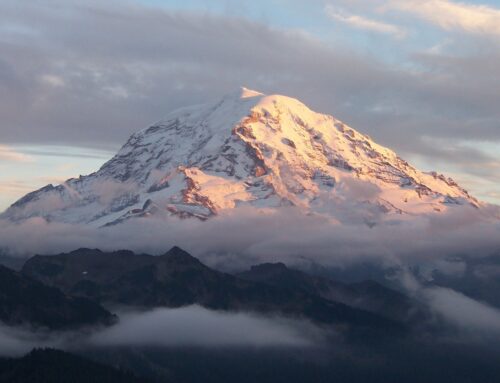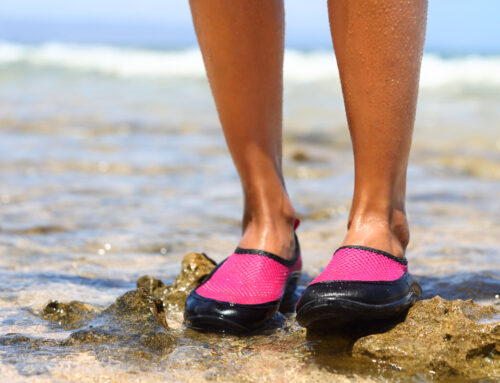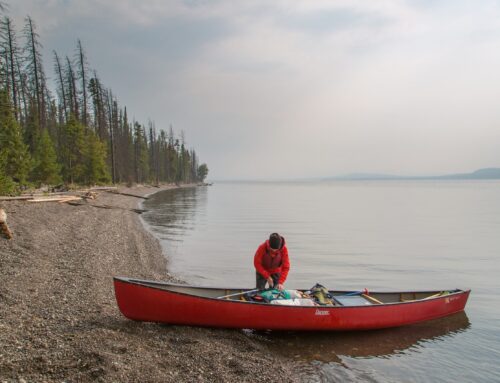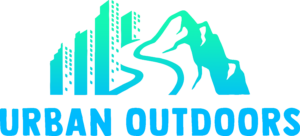Updated November 17, 2022
Getting outdoors in the Twin Cities can feel a bit overwhelming. With massive skyscrapers all around, Minneapolis’ urban amenities are great for a city lifestyle, but we all crave being out in nature. Going canoeing and kayaking in Minneapolis is a great way to explore the vibrant culture of the Twin Cities. Nearby lakes, streams and rivers are wonderful places to access the outdoors and enjoy paddling around this beautiful city.
Many of the places listed below are right in the city- paddles will have awesome views of the Twin Cities’ skyline and famous architecture. If you are looking to escape busy city life, there are tons of breathtaking waterways just outside city limits. From tree-lined lakes to rambling rivers, the Minneapolis area is a haven for outdoor water activities. Below is a guide we have made to help you get outside and explore the most beautiful places to go canoeing and kayaking in Minneapolis.
Best Places to Go Canoeing and Kayaking in Minneapolis & the Twin Cities
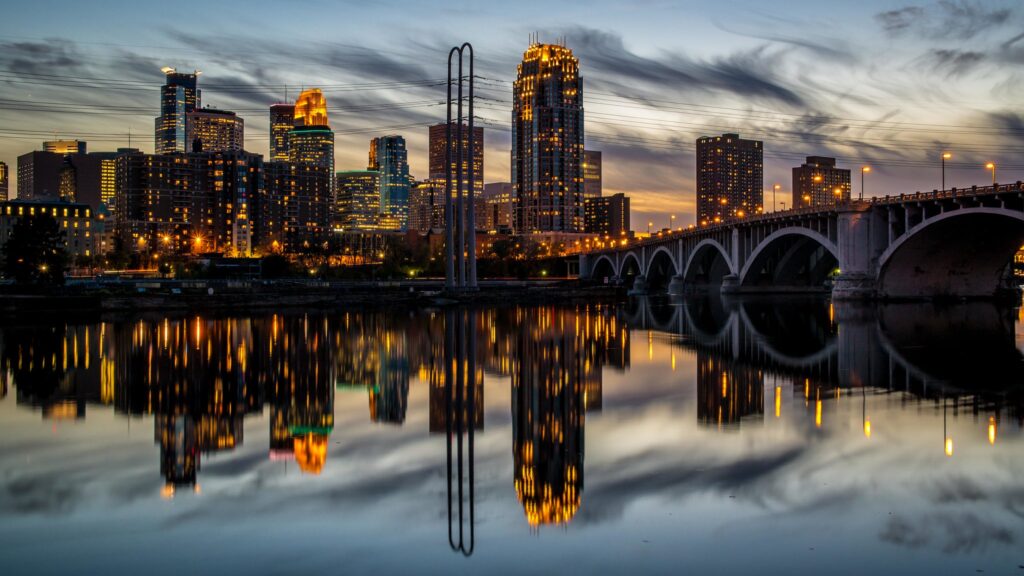
Rum River
- Location: Isanti
- Rentals Available: Yes, at River Dragon Kayak Rentals
Rum River’s wild and scenic 145 miles of waterway is an awesome place to go canoeing and kayaking in Minneapolis year-round. With Class I and II rapids along the way, this historic waterway is best for intermediate paddlers.
At the mouth of the river, visitors enjoy paddling around the glacial Lake Mille Lacs. This freshwater lake is a great place to begin your paddle journey. Near this part of Rum River paddlers can see Ojibwe and Dakota burial mounds, tools and other historic artifacts.
As Rum River flows south, paddlers will be mesmerized by the scenery. Elm, maple and pine forests line the river banks, with boulders and beaver dams guiding the route. This freshwater river is also a haven for wildlife. Besides trout, paddlers can spot white-tailed deer on the banks and bald eagles soaring over head.
Many paddlers enjoy launching their boats from Martin’s Landing Public Water Access and kayaking to Rum River North County Park Access (about 4.5 hours of paddling). Rum River’s significant current and obstacles provide a fun challenge for avid kayakers. Flowing through a vast portion of Minnesota, paddling down Rum River offers views of the diverse landscapes around Minneapolis.
If you have your own kayak, you can launch your boat anywhere on the river. Or, you can rent a kayak from River Dragon Kayak Rentals if you need kayak gear. Rum River’s crystal clear glacial waters are a beautiful place to explore while kayaking in Minneapolis and the Twin Cities.
How to Get There: The best way to get to Rum River is to drive. If you plan on driving, take I-94 W toward St. Cloud. Then, continue on MN-95 E to Alpha Rd.
Cannon River
- Location: Faribault
- Rentals Available: Yes, at Cannon Falls Canoe and Bike Rental
Rolling hills and bluffs surround the beautiful Cannon River. Known for the sedimentary rock outcroppings along the route, Cannon River is true geological masterpiece.
Paddlers of all abilities love kayaking around Minneapolis’ Cannon River. After a relaxing paddle along the tree-lined banks of the river, many visitors enjoy paddling to Cannon Falls, a deep gorge with tons of flora and fauna. Here, paddlers can also see stunning limestone outcrops reaching above 300 ft. in elevation.
Along with the stunning scenery, Cannon River is friendly to all types of kayakers. There are multiple marked routes, with the shortest and most popular route as “Cannon Route I”. Cannon River also has many sandbars which make nice spots for a picnic break or to go swimming.
From densely packed trees to major stone outcroppings, there is a lot to see and explore at Cannon River. If you have your own boat, you can launch your kayak from Two Rivers Park Canoe Landing. Or, you can rent a kayak from Cannon Falls Canoe and Bike Rental. Canoeing, kayaking and floating down Cannon River is a wonderful way to spend time outdoors this year.
How to Get There: The best way to get to Cannon River is to drive. If you are driving, take I-94 E to US-10 E. The, continue on Great River Rd. to the water.
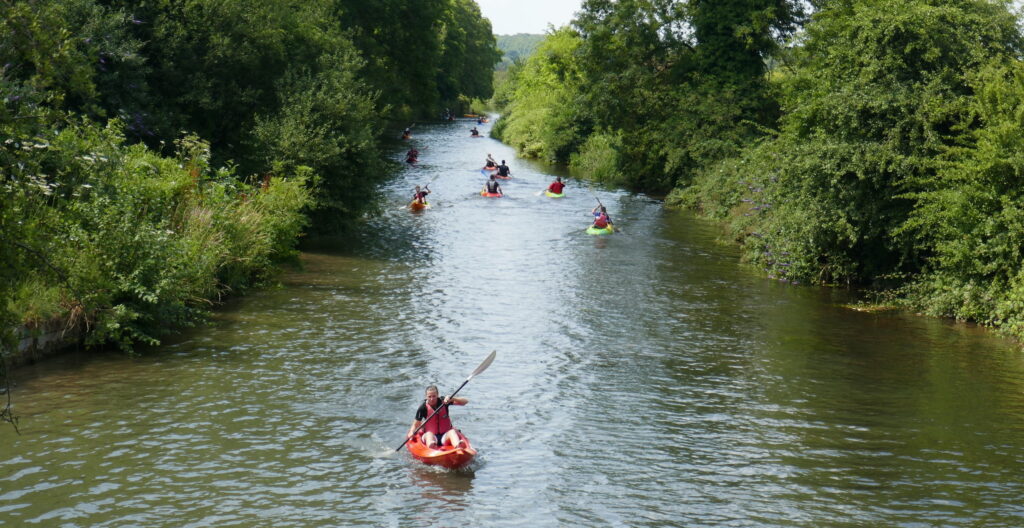
Snake River
- Location: Mora
- Rentals Available: Yes, at Snake River Outfitters
Originally called “Kanabec”, or snake, by the Ojibwe, Snake River has a wide range of paddle routes well-suited for all levels. The river’s three distinct sections vary in difficulty, but are all surrounded by breathtaking scenery.
The upper and lower portions of Snake River are best suited for intermediate and advanced paddlers. In these areas, there are Class II-V rapids that thrust paddlers into the thick of elm, ash, and maple forests.
The middle of Snake River, flowing from Mora to Pine City, is best for novice paddlers to go kayaking in Minneapolis. Here, a gentle current nudges paddlers through sandstone and granite bluffs and through lush green lands. It’s important to note that after Pine City, Snake River has many intense rapids and will be a challenging paddle for beginners.
If you have your own boat, you can launch your kayak anywhere along the river. Or, you can rent a kayak and book guided tours through Snake River Outfitters. The upper and lower parts of the river are perfect for a white water rafting adventure!
How to Get There: The easiest way to get to Snake River is to drive. If you are driving, take US-10 W toward Anoka. Then, continue on MN-65 N to the river.
Lake Calhoun
- Location: Minneapolis
- Rentals Available: Yes, at Wheel Fun Rentals
Only 15 minutes from downtown Minneapolis, Lake Calhoun is one of the many waterways in the city’s Chain Of Lakes. With 13 miles of interconnected waterways, Lake Calhoun is a quiet place for paddlers to enjoy a day outside.
Kayaking in Minneapolis is an easy way to enjoy the outdoors in an urban setting and offers a wonderful view of the downtown skyline. While paddling on Lake Calhoun’s open waters, visitors can see some of the oldest homes in Minneapolis. Grassy green fields and wooded areas also line the shores of Lake Calhoun and its surrounding waterways.
Besides Lake Calhoun’s peaceful waters, paddlers can continue paddling to the larger Cedar Lake and Lake of Isles. There, visitors can paddle around mini islands and inlets and spot wildlife. Because of this unique scenery, Lake of Isles and Cedar Lake are more popular places to go kayaking in Minneapolis. For a secluded and scenic paddle near downtown, Lake Calhoun is the best choice.
If you have your own boat, you can launch your kayak at any waterway in the Chain of Lakes. Or, you can rent a kayak from Wheel Fun Rentals. Whether you are looking for a fun afternoon in nature or want an outdoor date night, Chain of Lakes has plenty of places for you to explore.
How to Get There: The best way to get to Lake Calhoun is to drive. If you plan on driving, start on I-94 W and take exit 231 B to merge onto Hennepin Ave. Continue on W 31st St. to the water.
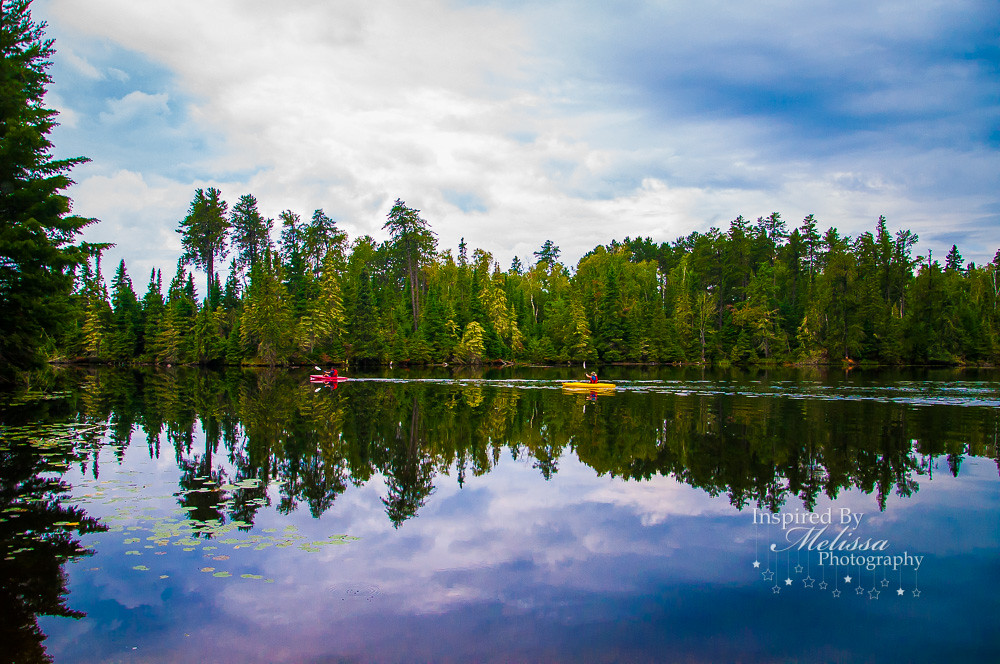
Root River State Water Trail
- Location: Preston
- Rentals Available: Yes, at Root River Outfitters
Only 1 hour south from the Twin Cities, Root River State Water Trail combines historic charm with picturesque scenery. This meandering water trail is easy to paddle, which makes it perfect for all ability levels.
The mouth of Root River is surrounded by grassy prairie lands. As you paddle down the river, massive limestone bluffs and rolling hills emerge as if from nowhere! Through all of these scenery changes, there are 8 charming historic towns that line the river, known as “Root River Towns.” Like the diverse landscapes, each town has its own unique vibe and are wonderful places to explore after a day of paddling.
Among the rocky bluffs and plains, paddlers can spot tons of wildlife, such as foxes, deer and over 40 species of birds. Root River has over 85 miles of waterway to explore. The middle section of the river is best for novices and families to go kayaking in Minneapolis. For a more challenging paddle, try the southern portion of the river. Rocky pools and portages add exciting elements to this adventurous trip.
If you have your own boat, you can launch your kayak anywhere along the river. Or, you can rent a kayak and book guided tours through Root River Outfitters. From exploring historic towns to paddling past massive bluffs, Root River is an excellent place to go canoeing and kayaking in Minneapolis.
How to Get There: The easiest way to reach Root River is to drive. If you are driving, take I-90 E toward La Crosse and exit toward Rushford. Then, continue on MN-16 E to the water.
Wild River State Park
- Location: Center City
- Rentals Available: Yes, at Eric’s Canoe and Kayak Rental
Wild River State Park is a haven for outdoor activities perfect for family day-trips and camping. Nestled in the St. Croix River, Wild River State Park gets its name from being one of the first “wild” rivers protected by the U.S. Congress.
Tucked away behind wooded forests, the waters of Wild River State Park are serene and accessible to all ability levels. While paddling around these clam waters, visitors can explore marshes, inlets and spot tons of wildlife.
Nicknamed the “Day Tripper” by outdoor lovers in the Twin Cities, Wild River State Park is the perfect weekend trip to get out of the city. The park’s campsites and rentals are affordable and give the perfect chance to reconnect with the outdoors.
After a relaxing paddle, visitors can enjoy hiking on any of the park’s 35 trails. Many of the hiking trails and campsites overlook the water which is the perfect backdrop for any outdoor adventure.
If you have your own boat, you can launch your kayak in the park. Or, you can rent a kayak in the park on the weekends. If you plan on exploring the park during the week, you can rent a kayak from Eric’s Canoe and Kayak Rental. Navigating the St. Croix River is an amazing way to get in touch with Minnesota’s unparalleled beauty.
How to Get There: The easiest way to get to Wild River SI-35 Ntate Park is to drive. If you are driving, take I-35 N toward Cambridge. Then, continue on the St. Croix Trail to the State Park Trail.
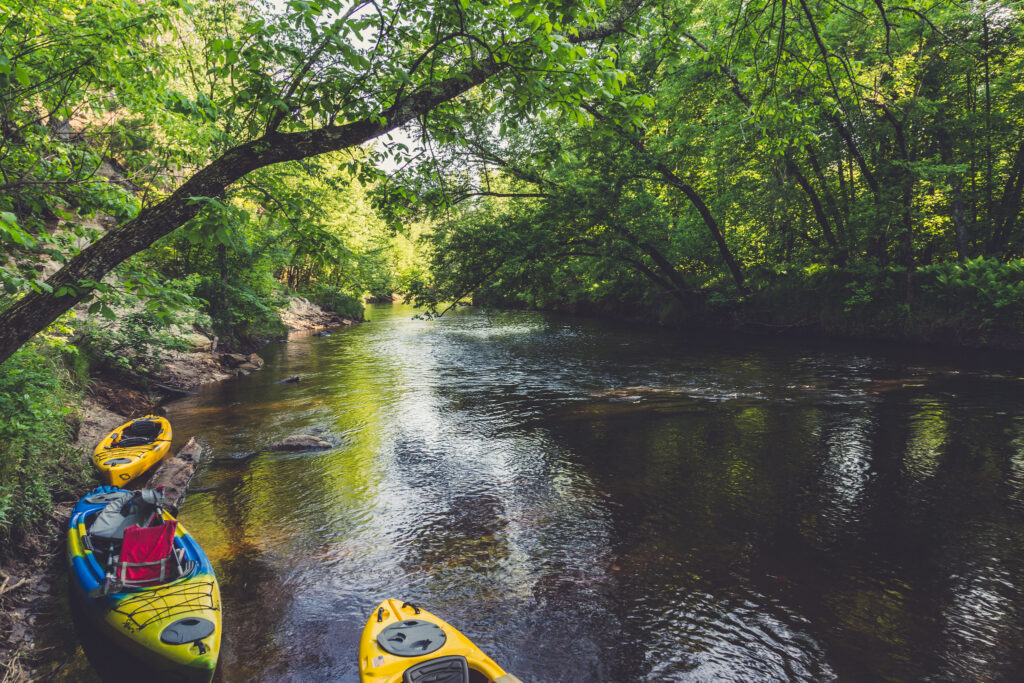
Minnehaha Creek
- Location: Minnetonka
- Rentals Available: Yes, at Kayak the Creek
Stretching from Lake Minnetonka to Minnehaha Falls, Minnehaha Creek is one of the most picturesque places to go canoeing and kayaking in the Twin Cities. From dense woodlands to urban neighborhoods, Minnehaha Creek is a wonderful place for paddle enthusiasts to explore.
Many visitors enjoy beginning their paddle at Gray’s Bay Dam and continue to paddle to Longfellow Lagoon. Along the way, paddlers will experience a variety of natural landscapes. Make sure to look out for Minnehaha Creek Preserve near Methodist Hospital. Here, Minnehaha Creek’s wetlands and marshes support complex ecosystems before flowing into a more urban setting.
This flat water creek is a wonderful place for novice kayakers, tubing or floating down the river. A scenic 22 miles provide a beautiful backdrop for any of these relaxing outdoor activities. Best of all, Minnehaha Creek does not get too crowded, so you will most likely have the whole river to yourself.
If you have your own boat, you can launch your kayak anywhere along the river. Or, you can rent a kayak and join regular paddling programs through Kayak the Creek. This secluded outdoor space is an awesome place to go canoeing and kayaking near Minneapolis.
How to Get There: The best way to reach Minnehaha Creek is to drive. If you are driving, take MN-100 S to Yosemite Ave S to the creek.
Zumbro River
- Location: Mazzeppa
- Rentals Available: Yes, at Boulder Dam Canoe and Kayak Rental.
Known for its lively current and vibrant scenery, Zumbro River is an exciting challenge for avid paddlers going canoeing and kayaking in Minneapolis.
Most of the river is located below the Rochester Power Dam. This highly influences the water levels, so make sure to check the Zumbro River’s water levels before launching your boat. Many visitors enjoy paddling through the deep gorges of the Zumbro River and viewing the scenic limestone bluffs.
Because of Zumbro River’s intense current and winding trails, it is important to map out a route before paddling. The most popular route is Zumbro Falls to Hammond (7 miles). This route is great for all ability levels and is known for its beautiful wooded forests.
For intermediate and advanced paddlers, you can try the route that flows from Theilman to Kruger Park (6-12 miles). With stunning views of bluffs and grassy plains, paddlers love exploring this section of the river. Towards the end of the route, kayakers can paddle through the renowned Zumbro Bottoms State Forest.
Teeming with adventure, kayaking down the Zumbro River is an amazing opportunity to explore Minneapolis’ natural beauty. If you have your own boat, you can launch your kayak anywhere along the river. Or, you can rent a kayak and book tours through Boulder Dam Canoe and Kayak Rental.
How to Get There: The easiest way to get to Zumbro River is to drive. If you are driving, take US-52 S toward Dennison. Then, continue on County Rd. 4 to T-74 to the water.
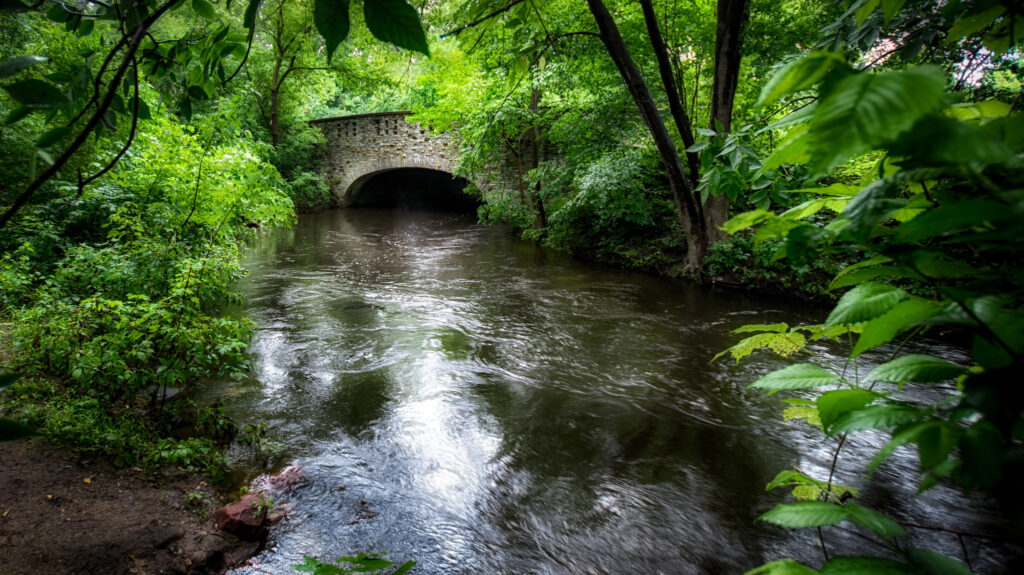
Kettle River
- Location: Carlton County
- Rentals Available: Yes, at Hard Water Sports
Kettle River’s unique amber waters are a wonderful place to go canoeing and kayaking in Minneapolis and the Twin Cities. Rocky bluffs and black spruce forests provide a scenic background to all of your paddle adventures.
Most of Kettle River has Class I rapids, which are manageable for all ability levels. However, there are stretches of Kettle River that become increasingly more intense and challenging to navigate. The “Banning Rapids” area of Banning State Park has Class II-IV rapids, which are better suited for intermediate and advanced paddlers.
The flatwater section of Kettle River is great for novice paddlers to try kayaking in Minneapolis. For those looking for a bit more adventure, Kettle River is the place to go whitewater kayaking and rafting in the Twin Cities area. You can “surf” the rapids and feel the thrill of going down a wild river!
If you have your own boat, you can launch your kayak anywhere along the river. Or, you can rent a kayak and book whitewater tours through Hard Water Sports. These intense rapids are not for the faint-hearted- Kettle River will be an unforgettable white water experience.
How to Get There: The easiest way to reach Kettle River is to drive. If you are driving, take I-35 N toward Moose Lake. Then, continue on MN-73 N to Cedar St.
Rice Creek
- Location: Northern Minneapolis
- Rentals Available: Yes, at Rice Creek Boat Club
If you are looking for a family-friendly spot to go canoeing and kayaking in Minneapolis, Rice Creek is a great option. From meandering streams to wide-open lakes, Rice Creek flows through a variety of habitats and landscapes.
Rice Creek begins by flowing through five different small lakes before narrowing into a creek. This portion of Rice Creek has calm, flat waters great for kids and novice paddlers. After flowing passed scenic meadows and grassy plains, Rice Creek opens into Long Lake.
Many visitors enjoy ending at Long Lake so they can explore Long Lake Regional Park. There, local guides can show you around the area and can explain all aspects of the diverse habitats seen along the paddle. Long Lake’s open waters are a bit more challenging for novices, so Upper Rice Creek is better for kids.
Whether you take an afternoon to explore the meadows and intricate bridges of Upper Rice Creek or kayak around Long Lake, Rice Creek is a great place to get away from the busy city. If you have your own boat, you can launch your kayak at the Peltier Lake Public Boat Launch. Or, you can rent a kayak and book guided tours through the Rice Creek Boat Club.
How to Get There: The best way to reach Rice Creek is to drive. If you are driving, start on I-35 N and take exit 36 for County Hwy 23. Then, continue on Main St. to the water.
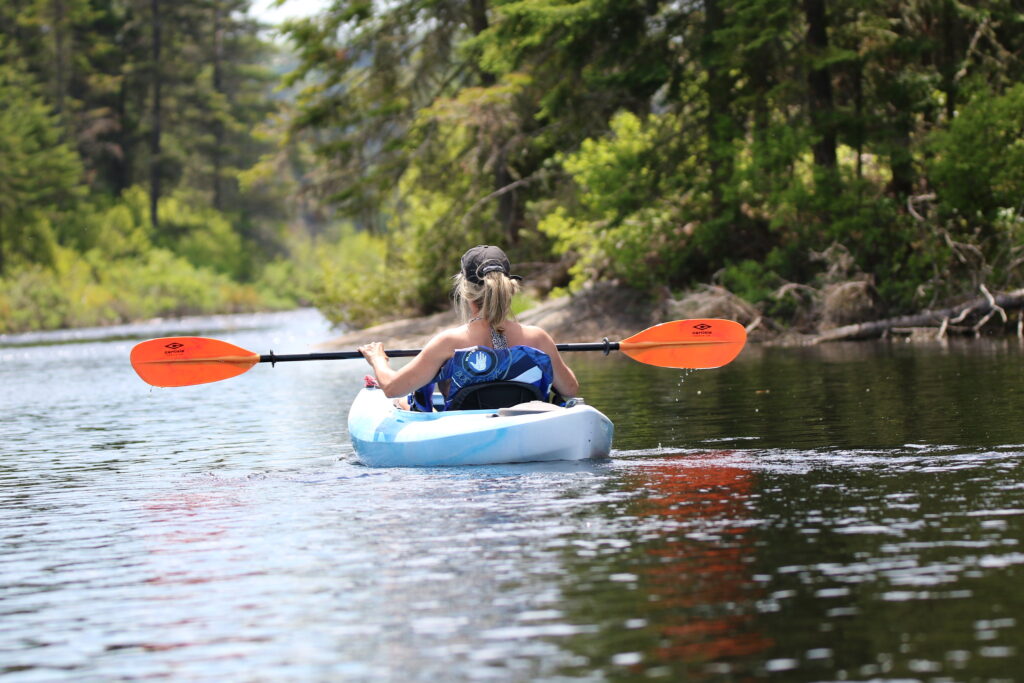
Crow River State Water Trail
- Location: Dayton
- Rentals Available: Yes, at River Dragon Kayak Rental
Crow River State Water Trail is an expansive waterway just outside of metro Minneapolis. It is classified by the North Fork and the South Fork, each with their own scenic routes.
Both the North Fork and the South Fork have calm waters for easy paddling trips. The South Fork is especially gentle and great for beginners. The “Big Woods” line the shores of the Crow River which provide much needed shade on those sunny days!
Once the North and South Forks converge, there are great places to set up camp and go swimming. Many visitors enjoy camping at Lake Rebecca Park Reserve and exploring Rockford’s Riverside Park. Crow River’s wooded banks are known for their extensive wildlife preserves. The largest population of waterfowl in the U.S. can be found in Crow River’s Gopher Campfire Wildlife Preserve.
If you have your own boat, you can launch your kayak anywhere along the river. Or, you can rent a kayak from River Dragon Kayak Rental. Crow River’s flat waters and campsites make it the perfect place for a multi-day trip or getaway weekend.
How to Get There: The easiest way to get to Crow River is to drive. If you plan on driving, take I-94 W toward St. Cloud. Then. continue on Pioneer Trail to River Rd. NE to the water.
Vermilion River State Water Trail
- Location: Saint Louis County
- Rentals Available: Yes, at Anderson’s Canoe Outfitters
For a rustic getaway, Vermilion River State Water Trail has everything you need for an excellent paddle trip. Stretching from Vermilion Lake to Crane Lake, the Vermilion River is a stunning waterway for paddle boarding, canoeing and kayaking in Minneapolis.
Dense forests and bedrock line the shores of the river. Prehistoric igneous and metamorphic rock have created awesome structures and bluffs to view as you paddle. With miles of river between Vermilion and Crane Lakes, Vermilion River is a fun way to experience easy river kayaking. While there can be rapids after heavy rainfall, usually the river’s gentle current is accessible for all ability levels.
The Vermilion Lake area is especially popular for families and couples. Rustic cabins are built around the shore with amazing views of this beautiful landscape. While there are many places to go kayaking in Minneapolis with an urban setting, Vermilion River is a true escape into nature.
If you have your own boat, you can launch your kayak at Vermilion or Crane Lake. Or, you can rent a kayak from Anderson’s Canoe Outfitters.
How to Get There: The best way to get to Vermilion River is to drive. If you are driving, take US-52 S and turn onto 200th St E.
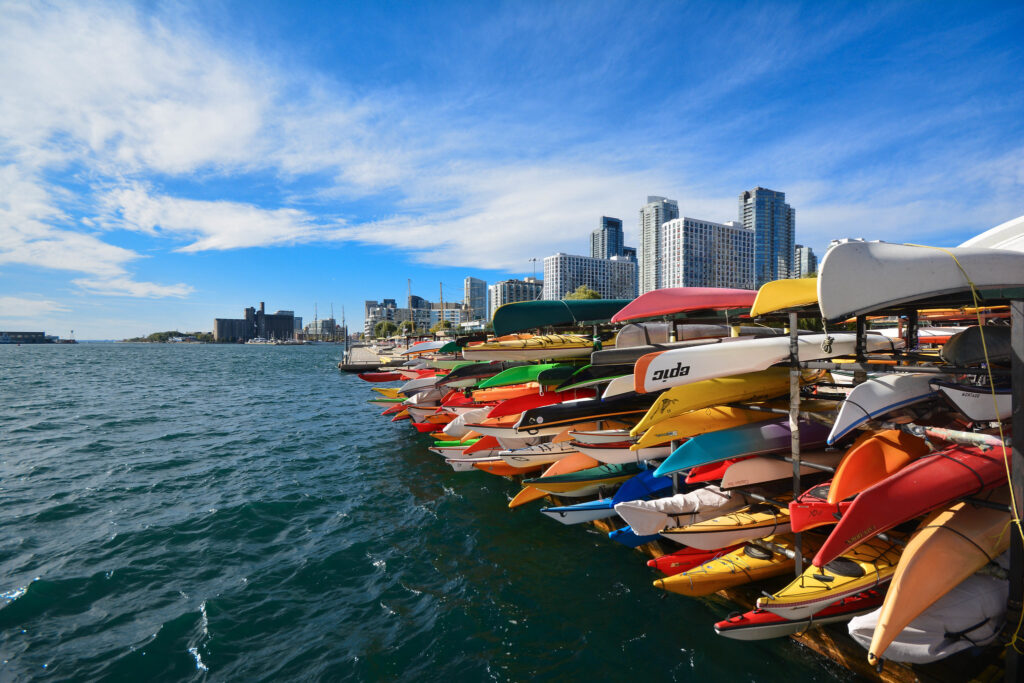
Additional Resources
What to Pack for Canoeing and Kayaking in Minneapolis
- Swimsuit: Wearing a swimsuit is essential for being out on the water! When canoeing and kayaking, chances are you are going to get wet, so best to be prepared! Click here to compare men’s and women’s styles and prices for our favorite swimsuits.
- Sunglasses: Being out on the water is beautiful, but the water can really reflect light! Make sure to bring a pair of sunglasses and croakies to keep them from falling off.
- Hat: It’s best to keep the sun off of your head to keep you cool. Whether you prefer a nice bucket hat or a vintage baseball cap, keeping cool will ensure an awesome trip.
- Water Bottle: Keeping hydrated is no joke! Paddling is a great way to exercise and relax, but that means it takes a lot of energy too! Make sure to drink plenty of water throughout your trip with these cool water bottles.
- Sunscreen and Bug Spray: Don’t let the elements stop you from having an amazing paddle! I recommend bringing sunscreen and bug spray in the boat with you to ward off any pests and sunburns.

